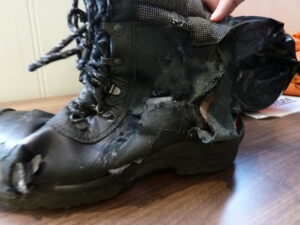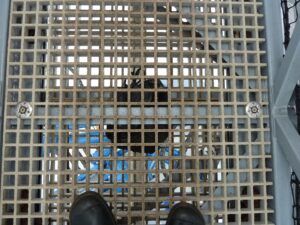Company fined after worker spotted on pallet raised by forklift truck
A company has been fined after shocked onlookers spotted an employee precariously working from height while standing on a pallet raised by a forklift truck at Ramsgate Harbour.
The Health and Safety Executive (HSE) prosecuted European Active Projects (EAP) Limited for breaching Work at Height Regulations after one of its workers was spotted on the pallet on 8 July 2022. The workplace regulator was alerted to the activity after it was reported by a member of the public, who managed to capture the terrifying debacle on video.
The worker was part of a team of three at EAP Limited that were removing work equipment from the deck of a boat in the harbour’s slipway.
As scaffolding had been removed, the workers raised a pallet to the deck with a forklift truck and used it as a mobile platform to remove items from the boat.
One of the workers was then witnessed climbing from the side of the vessel, beneath the guard rails, and onto the pallet with a heavy, motorised pressure washer. The pressure washer was then lowered to the ground.
The HSE investigation found EAP Limited had failed to plan the work at height associated with the refurbishments and repair work being completed on the boat, leaving workers at risk, with no safe method for removing equipment located on the vessel’s deck.
HSE guidance can be found at: Work at height – HSE
European Active Projects Limited, of Chatham Docks, Gillingham Gate, Chatham, Kent, pleaded guilty to breaching Section 4(1) of the Work at Height Regulations 2005. The company was fined £100,000 and ordered to pay £5,730.40 in costs at Maidstone Magistrates’ Court on 20 December 2023.
HSE inspector Samuel Brown said: “This incident demonstrates why there is a need to appropriately plan and supervise work at height. Clearly, lessons had not been learnt since the company’s previous prosecution in 2015.
“Falls from height are still the biggest cause of fatal accidents involving workers.
“The risk of workers falling from the pallet and sustaining serious, possibly fatal, injuries should not be ignored. Fortunately, no workers were harmed and the reporting of the incident by a concerned member of public enabled HSE to intervene and prevent any further unsafe work at height on site.”
This HSE prosecution was brought by HSE senior enforcement lawyer Nathan Cook and supported by HSE paralegal officer Cristina Alcov.
Notes to editors:
- The Health and Safety Executive (HSE) is Britain’s national regulator for workplace health and safety. We prevent work-related death, injury and ill health through regulatory actions that range from influencing behaviours across whole industry sectors through to targeted interventions on individual businesses. These activities are supported by globally recognised scientific expertise.
- More information about the legislation referred to in this case is available.
- Further details on the latest HSE news releases is available.




